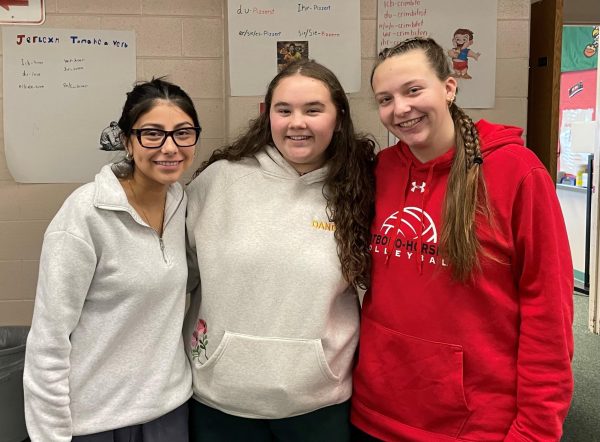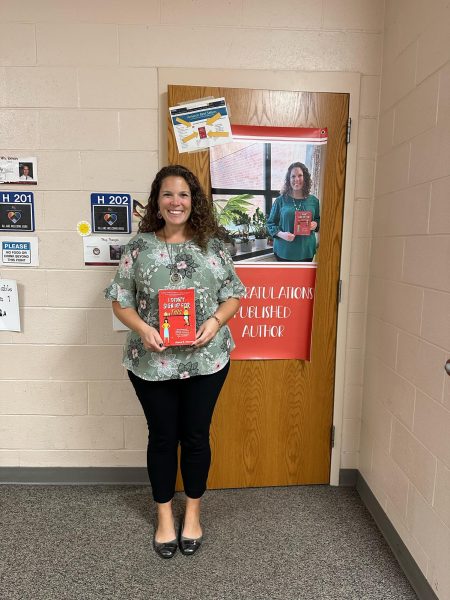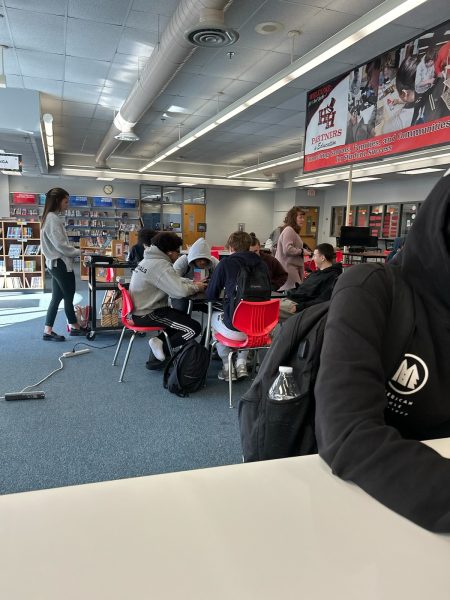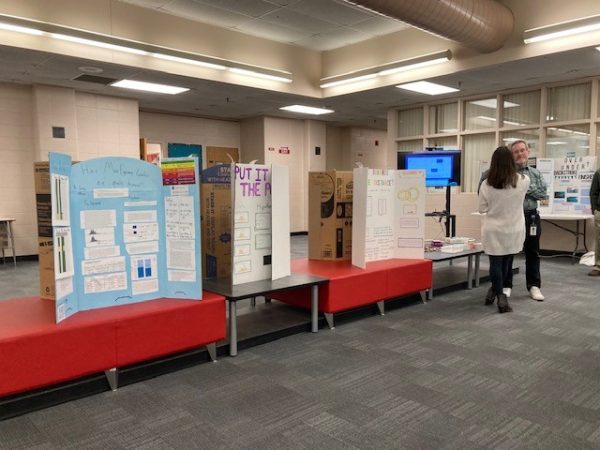Science Classes from Home
Remote learning has presented challenges to all subjects, but the science department has been uniquely impacted. Science teachers had to adapt labs to make them accessible from students’ new classrooms: their individual homes.
Biology
Honors biology plans to do the characteristics of water demonstration and an enzyme lab in their next unit. In the water demonstration, Mrs. Natalie Fetterman’s classes will put water on wax paper and glass to see which one the water adheres to based on its polarity. They will also use paper towels to demonstrate capillary action (where water travels up the paper towel just like it does in plant stems). They will expose a yeast mixture to hydrogen peroxide in the enzyme lab to measure the rate of reaction when exposed to different concentrations and temperatures.
Mrs. Fetterman said, “I’m lucky to teach biology because quite a few of the labs can be done with materials commonly found in people’s homes. I will also be doing demonstrations in my kitchen in case students don’t have access to the materials.”
Also, there are many accessible online resources that show biology labs. The main restriction for honors biology is the inability to do labs that use microscopes. However, Mrs. Fetterman has created PowerPoints with images of the slides for students to label the cell parts.
AP Biology has already done two labs on animal behavior and artificial selection. In the animal behavior lab, students found isopods (roly-polys, or pill bugs) in their backyards, observed their preferred environmental conditions and calculated if the bugs’ preferences were statistically significant. Plants were distributed for the artificial selection lab, which students have grown for almost four weeks and will soon cross-breed based on specific traits.
Mr. Tim Enge said, “Obviously biology labs are difficult to run. However, the nature of science is that we can always be thinking critically and investigating the natural world. That’s why in AP Biology we are doing our best to run laboratories using what is available. We then can think critically about our limitations and problem solve to make the experiments better. In a way, it makes students think even more than when they are doing labs in class, as there are individual problems that require innovative thinking to solve.”
Chemistry
Along with written assignments, chemistry relies on labs to demonstrate concepts. Chemistry classes this year have been using two online programs to do their labs: pHet interactive simulations from the University of Colorado and Gizmos.
Mr. Anthony Adamucci said, “We did a couple labs already in chemistry where students placed sodium in water and watched the temperature change. Also, students have played around with mass spectroscopy through a virtual instrument as well. Pretty cool! However, nothing replaces the sights, sounds and smells of being in a chemistry lab with hands-on experience.”
Sophomore Peter Lee said, “Online chemistry is running smoothly. It is weird that I am not in the class with my chemistry teacher and testing still needs to be tweaked and getting used to. However, I appreciate the autonomy I receive during online school.”
Physics
Labs are a substantial part of the learning experience in physics courses. They make up 25% of students’ grades. There is not enough equipment to be sent home to students, so physics classes have resorted to using simulations from the University of Colorado. Mrs. Jen McElrath said the substitute “works well for now!”
Environmental Science
According to Mrs. Maria Simon, environmental science labs are not as effective from home. However, the labs are still beneficial since students can see the procedures and complete data analysis to better understand the curriculum.
She said, “So far we have completed two ‘labs’ in AP Environmental, and they were completed using online videos. In a lab on productivity, students viewed sample collection and data from the video. In a lab on ocean acidification, they viewed a demonstration and then were given maps and global data to interpret.”










